Athena (Advanced Telescope for High ENergy Astrophysics) is the X-ray observatory mission selected by ESA, within its Cosmic Vision programme, to address the Hot and Energetic Universe scientific theme.
It is the second L(large)-class mission within that programme and is due for launch in early 2030s.
Athena will consist of a single large-aperture grazing-incidence X-ray telescope, utilizing a novel technology (High-performance Si pore optics) developed in Europe, with 12m focal length and 5 arcsec HEW on-axis angular resolution.
The focal plane contains two instruments. One is the Wide Field Imager (WFI) providing sensitive wide field imaging and spectroscopy and high count-rate capability. The other one is the X-ray Integral Field Unit (X-IFU) delivering spatially resolved high-resolution X-ray spectroscopy over a limited field of view.
|
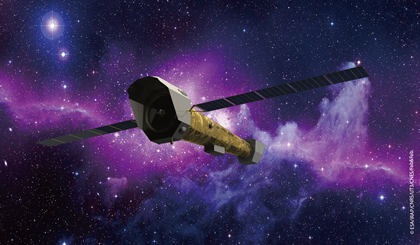
An artistic view of Athena space observatory. The mirror of the telescope is located upfront. The science payload is located at the opposite. The overall height of the spacecraft is about 15 meters, derived from the 12 meter focal length of the telescope. Athena mission from the 2019 X-IFU movie. Credit: ESA/IRAP/CNRS/UT3/CNES/Fab&Fab. Composition: ACO.
|
Athena will study how hot baryons assemble into groups and clusters of galaxies, determine their chemical enrichment across cosmic time, measure their mechanical energy and characterise the missing baryons which are expected to reside in intergalactic filamentary structures.
At the same time, it will study the physics of accretion into compact objects, find the earliest accreting supermassive black holes and trace their growth even when in very obscured environment, and show how they influence the evolution of galaxies and clusters through feedback processes.
Athena will also have a fast target of opportunity observational capability, enabling studies and usage of GRBs and other transient phenomena. As an observatory, Athena will offer vital information on high-energy phenomena on all classes of astrophysical objects, from solar system bodies to the most distant objects known.
With its unparalleled capabilities, Athena will be a truly transformational observatory, operating in conjunction with other large observatories across the electromagnetic spectrum available in the early 2030s (like ALMA, ELT, JWST, SKA, CTA, etc).
|
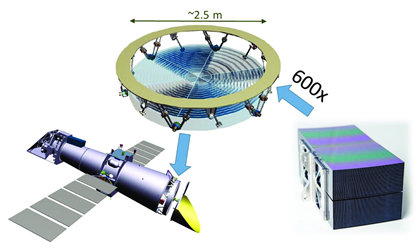
Conceptual design of the mirror structure: Left, center, mirror assembly and accommodation. Right, mirror modules and stacks. Credit ESA, Cosine and ACO Team..
|
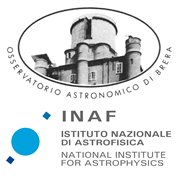 For the latter, INAF provides a significant contribution to the development of the X-IFU instrument, capable of providing spectra in the X-band with very high spectral resolution, of the order of a few electron volts, and to the focusing X-ray optics. Optics that will be by far the most sensitive and powerful ever built for an astronomical X satellite, with an effective area of 14,000 square cm at 1 keV. For the latter, INAF provides a significant contribution to the development of the X-IFU instrument, capable of providing spectra in the X-band with very high spectral resolution, of the order of a few electron volts, and to the focusing X-ray optics. Optics that will be by far the most sensitive and powerful ever built for an astronomical X satellite, with an effective area of 14,000 square cm at 1 keV.
The INAF-Osservatorio Astronomico di Brera (OABrera) is actively involved in the development of the ATHENA’s optics, with a very important role in the development of new laboratories and facilities necessary for their characterization and calibration.
ATHENA’s optics will have a diameter of 2.5 meters and will consist of 600 individual modules assembled together.
The BEaTriX facility (Link to facility BEaTriX short description), fundamental for the characterization and calibration of each single module of these optics, has been built at the Merate base of OABrera.
|
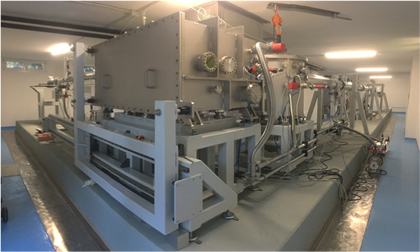
The BEaTriX facility built at the Merate base of OABrera..
|
While the VERT-X facility is being developed in collaboration with some Italian companies’ expert in the development of complex opto-mechanical systems.
The VERT-X facility will be used for the full characterization of the entire Athena integrated mirror.
VERT-X will be the only facility in the world capable of calibrating ATHENA’s optics in full-illumination mode, that is, fully illuminating the ATHENA optics with X-rays.
The construction of VERT-X is underway at the Media Lario company and is financed by ESA.
These two facilities, BEaTriX and VERT-X, are fundamental for the development and realization of Athena’s optics.
Reaseracher of OABrera are involved in various ETHENA working groups, in particular are co-chairing the Athena Telescope Working Group (TWG) and the Science Working Group SWG2.3 (Feedback in local AGN and star forming galaxies).
|
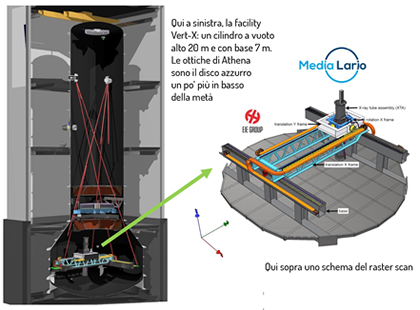
VERT-X facility that is underway at the Media Lario company in Bosisio Parini (LC).
|









 For the latter, INAF provides a significant contribution to the development of the
For the latter, INAF provides a significant contribution to the development of the 